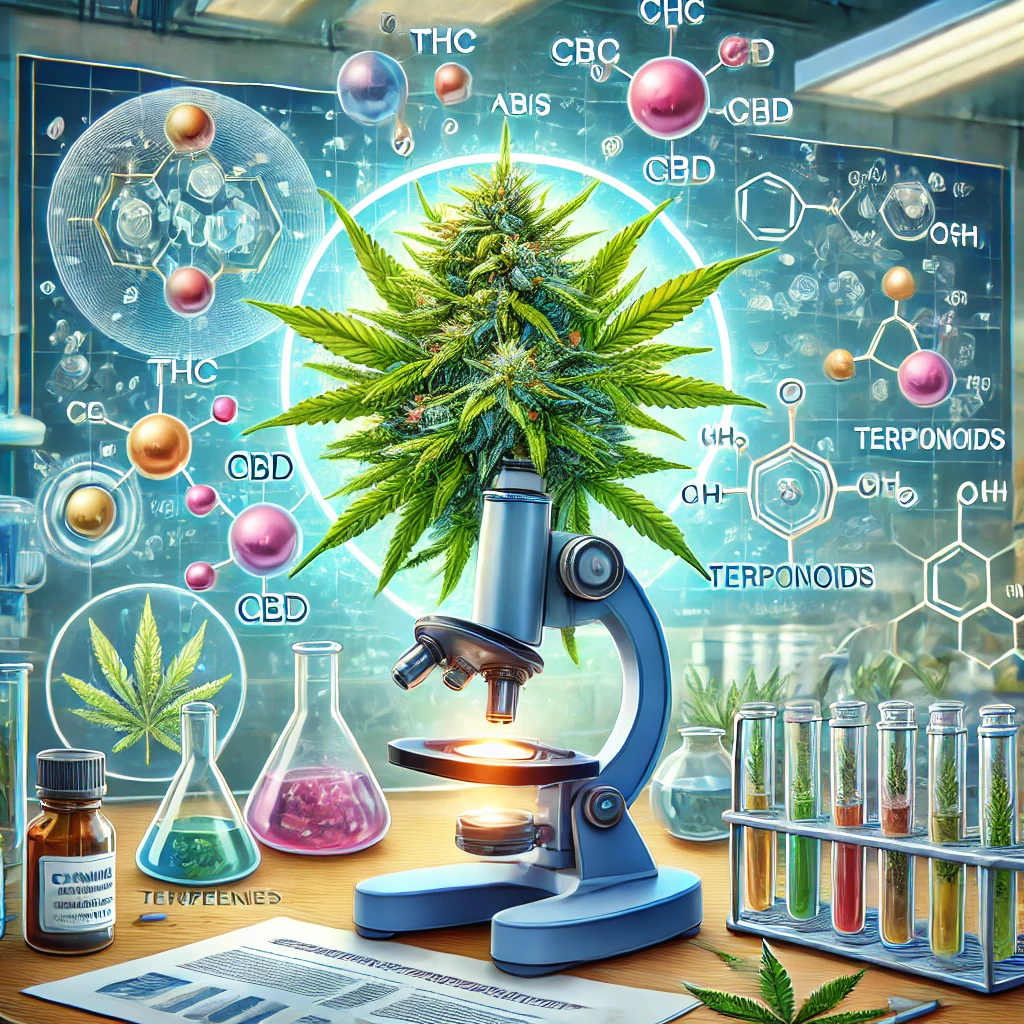In recent years, the cannabis industry has experienced a meteoric rise, thanks to widespread legalization and growing consumer interest. As this boom continues, understanding the intricate chemical composition of commercial cannabis becomes essential for producers and consumers alike. A recent study has illuminated the complex chemical makeup of cannabis, identifying over 6,000 distinct compounds.
The Rich Chemical Composition of Cannabis
Cannabis is a chemical powerhouse, brimming with a diverse array of constituents, including cannabinoids, terpenes, flavonoids, and other bioactive compounds. Advanced metabolomics techniques were used in the recent study to identify and catalog these compounds. Cannabinoids like THC (tetrahydrocannabinol) and CBD (cannabidiol) are the most well-known, primarily responsible for the plant’s psychoactive and therapeutic effects.
Terpenes, another significant group, contribute to the plant’s unique aroma and flavor. These compounds play a crucial role in the entourage effect, synergistically working with cannabinoids to enhance cannabis’s overall therapeutic benefits.
Flavonoids, though less frequently discussed, are vital as well. These compounds have antioxidant properties and contribute to the vibrant colors of the cannabis plant. Each of these chemical components interacts to create the unique effects associated with different cannabis strains.
Environmental and Agronomic Influences on Chemical Composition
The chemical composition of cannabis is dynamic and influenced by various environmental and agronomic factors. Temperature, humidity, light intensity, and soil composition can significantly impact the levels of cannabinoids, terpenes, and other bioactive compounds. For instance, higher light intensity can boost the production of certain terpenes, while soil composition can affect the overall cannabinoid profile.
Temperature and humidity play pivotal roles in the plant’s development. Excessive heat can degrade terpenes and cannabinoids, while optimal humidity levels are necessary to prevent mold and mildew, which can alter the plant’s chemical composition. Additionally, cultivation techniques, such as the use of organic versus chemical fertilizers, can have profound effects on the final product’s chemical composition.
Implications of Chemical Composition for Consumers and Producers
For consumers, understanding the chemical composition of cannabis is essential for making informed choices. Different strains and products can have varying effects based on their unique chemical profiles. Knowledge of these profiles helps consumers select strains that meet their specific needs, whether seeking relaxation, pain relief, or an uplifted mood.
For producers, this knowledge is invaluable for optimizing cultivation practices to achieve desired chemical compositions. By manipulating environmental conditions and employing precise agronomic techniques, growers can enhance the levels of specific cannabinoids and terpenes to create premium products that cater to consumer preferences.
The Future of Cannabis Research and Chemical Composition
As the cannabis industry continues to evolve, ongoing research into the plant’s chemical composition will be vital. Future studies are expected to explore the therapeutic potential of lesser-known cannabinoids and terpenes, as well as the impact of different cultivation techniques on the chemical composition of cannabis.
The exploration of minor cannabinoids such as CBG (cannabigerol) and THCV (tetrahydrocannabivarin) is particularly promising. These compounds, though present in smaller quantities, have shown potential therapeutic benefits that could revolutionize medical cannabis applications. Furthermore, research into the synergistic effects of cannabinoids and terpenes could lead to the development of more effective and targeted cannabis therapies.
The Role of Advanced Analytical Techniques in Understanding Chemical Composition
Advances in analytical techniques have played a pivotal role in unveiling the chemical composition of cannabis. Techniques such as gas chromatography-mass spectrometry (GC-MS) and high-performance liquid chromatography (HPLC) have enabled scientists to identify and quantify the myriad compounds present in cannabis. These techniques not only provide a deeper understanding of the chemical composition but also aid in ensuring product safety and consistency in the commercial cannabis market.

The recent study on the chemical composition of commercial cannabis provides a comprehensive understanding of the plant’s complex chemistry. By recognizing the factors that influence this composition, both consumers and producers can make more informed decisions. As research progresses, the cannabis industry will continue to uncover new insights into this remarkable plant, paving the way for more refined and effective products.
***
Trap Culture is the ultimate destination for cannabis enthusiasts who want to experience the best of Arizona’s cannabis culture. Whether you are looking for the hottest cannabis-friendly events, the latest news about everything from drug blockchain technology integration to trends in the industry, or the most exclusive and limited-edition products from the top brands in the market, Trap Culture has you covered. Visit our website to learn more about our events, our blog, and our store. Follow us on social media to stay updated on the latest news and promotions. Join the Trap Culture family and experience the most immersive and engaging cannabis-friendly social events in Arizona.


